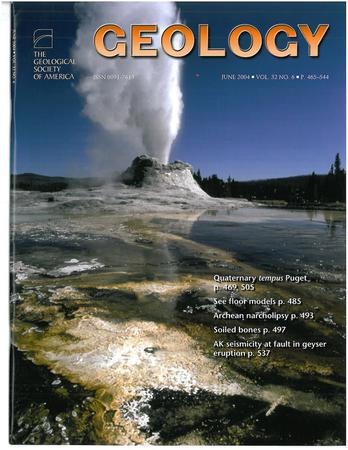Clumped isotope evidence for microbial alteration of thermogenic methane in terrestrial mud volcanoes
IF 4.6
1区 地球科学
Q1 GEOLOGY
引用次数: 0
Abstract
Methane in oil reservoirs originates mostly from thermogenic sources, yet secondary microbial methane production from petroleum biodegradation is known to be pervasive. The conventional approach for identifying this secondary microbial methane commonly relies on geochemical characteristics of other gas molecules such as the carbon isotopic composition of carbon dioxide and propane. This information is sometimes obscured by isotopic variations in source material and may not be available in certain geological reservoirs. To better constrain the presence of secondary microbial methane, we studied the clumped isotopologue compositions of methane in terrestrial Azerbaijanian mud volcanoes, which support the occurrence of secondary microbial gas. Here, a deficit in Δ12CH2D2 of thermogenic methane occurs due to different δD of hydrogen sources that contribute to the formation of methane molecules (i.e., combinatorial effect). The Δ12CH2D2 is expected to move toward equilibrium as thermal maturity increases. More importantly, both Δ13CH3D and Δ12CH2D2 values of methane approach low-temperature thermodynamic equilibrium in most gases, suggesting that the original thermogenic methane has been altered by newly formed microbial methane in addition to isotope exchange among methane molecules catalyzed by the methyl-coenzyme M reductase enzyme. We conclude that methane clumped isotopes provide a unique proxy for identifying secondary microbial methane and understanding the exact evolution stages for natural gases.陆相泥火山热成因甲烷微生物蚀变的块状同位素证据
油藏中的甲烷主要来自热源,但众所周知,石油生物降解产生的次生微生物甲烷也很普遍。识别这种次生微生物甲烷的传统方法通常依赖于其他气体分子的地球化学特征,如二氧化碳和丙烷的碳同位素组成。这一信息有时因源物质的同位素变化而模糊不清,在某些地质储层中可能无法获得。为了更好地约束次生微生物甲烷的存在,我们研究了阿塞拜疆陆相泥火山甲烷的块状同位素组成,支持次生微生物气的存在。在这里,由于不同氢源δD对甲烷分子形成的影响(即组合效应),导致热源甲烷在Δ12CH2D2中的亏缺。随着热成熟度的增加,Δ12CH2D2将趋于平衡。更重要的是,在大多数气体中,甲烷的Δ13CH3D和Δ12CH2D2值都接近低温热力学平衡,这表明除了甲基辅酶M还原酶催化甲烷分子之间的同位素交换外,原始的产热甲烷已经被新形成的微生物甲烷所改变。我们得出结论,甲烷团块同位素为鉴定次生微生物甲烷和了解天然气的确切演化阶段提供了独特的代理。
本文章由计算机程序翻译,如有差异,请以英文原文为准。
求助全文
约1分钟内获得全文
求助全文
来源期刊

Geology
地学-地质学
CiteScore
10.00
自引率
3.40%
发文量
228
审稿时长
6.2 months
期刊介绍:
Published since 1973, Geology features rapid publication of about 23 refereed short (four-page) papers each month. Articles cover all earth-science disciplines and include new investigations and provocative topics. Professional geologists and university-level students in the earth sciences use this widely read journal to keep up with scientific research trends. The online forum section facilitates author-reader dialog. Includes color and occasional large-format illustrations on oversized loose inserts.
 求助内容:
求助内容: 应助结果提醒方式:
应助结果提醒方式:


